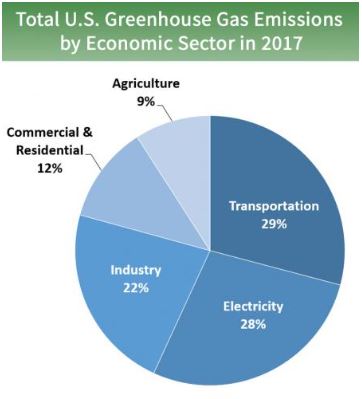
97 percent of scientists agree that humans have changed Earth’s atmosphere in dramatic ways over the past two centuries, resulting in global warming.
To understand climate change, we need to understand the Green House Effect.
A greenhouse is made of glass, allowing sunlight to penetrate the exterior and warm the air and plants inside. The heat that isn’t absorbed by plants is trapped by the glass and can’t escape. Throughout daylight hours, sunlight keeps coming through the glass, adding more and more heat energy so the inside gets warmer and warmer (and continues to stay warm after the sun sets).
The Earth and the Sun work in a similar fashion (on a much more massive scale and a different physical process). The sun shines through the Earth’s atmosphere and the earth’s surface warms up. Some of the Sun’s energy is reflected directly back to space, the rest is absorbed by land, ocean, and the atmosphere. The greenhouse gases in the atmosphere trap heat radiating from Earth toward space.
Carbon dioxide, methane, and other “greenhouse gases” trap heat that would otherwise escape Earth’s atmosphere. In the right proportion, these gases do a critical job ensuring the atmosphere holds onto enough heat to support every kind of life on the planet. Without them, the Earth would lose so much heat that life as we know it would be impossible.
The problem arises when greenhouse gas levels get too high because of human activities, trapping too much of the sun’s energy as heat and upset the natural systems that regulate our climate. Things keep getting hotter and hotter and we start seeing more and more extreme weather and other impacts.
Even small changes in the global average temperature can cause major and dangerous shifts in climate and weather.